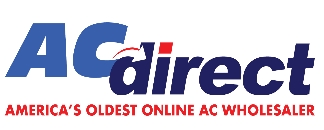Are Your Windows Costing You Money? Discover How Upgrades Can Boost Energy Efficiency
-
 By
Michael Haines
By
Michael Haines
- Nov 9, 2024

By Mike Haines 11/09 Hello everyone, Mike Haines here from your trusted HVAC wholesaler. Over the years, I've seen how windows play a crucial role in a home's energy efficiency and comfort. Old or inefficient windows can lead to significant heat loss in the winter and unwanted heat gain in the summer, causing your HVAC system to work overtime. Today, I want to delve into how upgrading your windows can enhance your home's energy efficiency, reduce your energy bills, and improve indoor comfort.
Key Highlights
- Reduced Heat Transfer: Energy-efficient windows minimize heat loss and gain, maintaining consistent indoor temperatures.
- Lower Energy Bills: Improved insulation reduces the workload on your HVAC system, leading to cost savings.
- Enhanced Comfort: Eliminates drafts and cold spots near windows, increasing overall comfort.
- UV Protection: Specialized coatings can protect your furnishings from harmful ultraviolet rays.
- Increased Home Value: Upgrades can boost your property's value and appeal to energy-conscious buyers.
The Impact of Windows on Energy Efficiency
Windows are essential for natural light and ventilation but can be a significant source of energy loss. Inefficient windows allow heat to escape during the winter and let in unwanted heat during the summer. This forces your heating and cooling systems to work harder, increasing energy consumption and costs.
Upgrading to energy-efficient windows can substantially reduce this energy loss. Modern window technologies offer improved insulation, better sealing, and coatings that reflect heat, all contributing to enhanced energy efficiency.

Energy-Efficient Window Technologies
Double-Glazed Windows
Double-glazed windows feature two panes of glass separated by a space filled with air or inert gas like argon. This design creates an insulating barrier that reduces heat transfer.
- Benefits:
- Thermal Insulation: Significantly reduces heat loss in winter and heat gain in summer.
- Noise Reduction: Provides better sound insulation compared to single-pane windows.
- Condensation Control: Reduces the likelihood of condensation forming on the interior glass surface.
Low-Emissivity (Low-E) Coatings
Low-E coatings are ultra-thin metallic layers applied to the glass surface. They reflect infrared light, keeping heat inside during winter and outside during summer.
- Benefits:
- Energy Savings: Improves thermal performance without sacrificing light transmission.
- UV Protection: Blocks harmful ultraviolet rays that can fade furnishings and flooring.
- Comfort Enhancement: Maintains consistent indoor temperatures year-round.
Window Frame Materials
The material of your window frames also affects energy efficiency. Common materials include:
- Vinyl: Good insulation properties, low maintenance, and cost-effective.
- Wood: Excellent insulation but requires regular maintenance to prevent rot and warping.
- Aluminum: Durable but conducts heat easily; often includes a thermal break to improve efficiency.
- Fiberglass: Strong, low-maintenance, and excellent thermal performance.
Selecting the right frame material enhances the overall efficiency of your windows.

Sealing Techniques to Prevent Drafts
Proper sealing is crucial to prevent air leaks around windows. Even energy-efficient windows won't perform well if they're not sealed correctly.
Weatherstripping
Weatherstripping involves applying materials around movable parts of windows to seal gaps.
- Types:
- Compression Seals: For casement or awning windows.
- V-Strips: Ideal for double-hung windows.
- Foam Tape: Quick fix for irregular gaps.
Regular inspection and replacement of weatherstripping ensure ongoing performance.
Caulking
Caulking seals cracks and gaps between stationary window components and the wall.
- Application Areas:
- Around Frames: Seals the gap between the window frame and the wall.
- Between Window Components: Seals joints in the window assembly.
Using the appropriate caulk type (e.g., silicone, latex) is essential for durability and effectiveness.
The Connection Between Windows and HVAC Efficiency
Upgrading your windows directly impacts your HVAC system's performance. By reducing heat transfer, your heating and cooling systems don't have to work as hard to maintain desired indoor temperatures.
- Reduced Load: Less strain on your HVAC system can extend its lifespan.
- Energy Savings: Lower energy consumption translates to reduced utility bills.
- Improved Comfort: Eliminates cold drafts and hot spots near windows.
Investing in energy-efficient windows complements other energy-saving measures like proper insulation and efficient HVAC equipment.
Factors to Consider When Upgrading Windows
Climate
Your local climate influences the type of windows that will offer the best energy efficiency.
- Cold Climates: Windows with high insulation values (high R-value) are essential to reduce heat loss.
- Hot Climates: Windows with low solar heat gain coefficients (SHGC) minimize heat gain from sunlight.
- Mixed Climates: Balance between insulation and solar control features is necessary.
Window Orientation
The direction your windows face affects their impact on energy efficiency.
- South-Facing Windows: Benefit from passive solar heating in winter but may require shading in summer.
- North-Facing Windows: Receive less direct sunlight, reducing heat gain concerns.
- East and West-Facing Windows: Can contribute to heat gain in the morning and afternoon; consider shading options.
Installation Quality
Proper installation is critical for window performance.
- Professional Installation: Ensures windows are fitted correctly, preventing air leaks.
- Flashing and Sealing: Protects against water infiltration and drafts.
- Inspection: Regular checks can identify issues early, maintaining efficiency.
Frequently Asked Questions
How do energy-efficient windows save money?
By reducing heat loss and gain, energy-efficient windows decrease the workload on your HVAC system, leading to lower energy consumption and utility bills.
What is the difference between double-glazed and triple-glazed windows?
Triple-glazed windows have three panes of glass with insulating spaces between them, offering even better thermal performance than double-glazed windows but at a higher cost.
How does Low-E coating improve window performance?
Low-E coatings reflect infrared radiation, keeping heat inside during winter and outside during summer, thus enhancing insulation without reducing visible light.
Can I install energy-efficient windows myself?
While DIY installation is possible, professional installation ensures proper fitting, sealing, and maximized energy efficiency.
Are there financial incentives for upgrading to energy-efficient windows?
Many utility companies and government programs offer rebates or tax credits for installing energy-efficient windows. Check local resources for available incentives.
How often should I replace weatherstripping and caulking?
Inspect weatherstripping and caulking annually and replace them if you notice cracks, gaps, or deterioration to maintain optimal performance.
Do energy-efficient windows reduce noise?
Yes, double or triple-glazed windows provide better sound insulation, reducing external noise intrusion.
What maintenance do energy-efficient windows require?
Regular cleaning and inspection of seals, weatherstripping, and hardware ensure longevity and performance.
Can window treatments improve energy efficiency?
Yes, using blinds, shades, or curtains can provide additional insulation and control over heat gain and loss.
Is it worth upgrading all windows at once?
Upgrading all windows maximizes energy savings and comfort but can be costly. Prioritize windows with the most significant impact, such as those facing harsh weather conditions or with noticeable drafts.
Final Thoughts
Upgrading your windows is a smart investment in your home's energy efficiency, comfort, and value. By choosing energy-efficient options like double-glazed windows and Low-E coatings and ensuring proper sealing and installation, you can significantly reduce energy consumption and lower your utility bills. Remember, windows are an integral part of your home's thermal envelope, and improvements here complement other energy-saving measures like insulation and efficient HVAC systems.
If you're considering window upgrades, consult with professionals to determine the best options for your specific needs and climate. The long-term benefits of enhanced comfort, reduced energy costs, and increased property value make window upgrades a worthwhile investment.
Additional Information
Upgrading your home's windows can significantly enhance energy efficiency, reduce heating and cooling costs, and improve indoor comfort. Here are some key considerations:
- Energy-Efficient Window Options
- Double-Glazed Windows: These windows feature two panes of glass with an insulating layer between them, reducing heat transfer and improving insulation. They are particularly effective in minimizing heat loss during winter and heat gain during summer.
- Low-Emissivity (Low-E) Coatings: Applying a Low-E coating to window glass helps control heat transfer by reflecting infrared light, keeping heat inside during winter and outside during summer. This enhances energy efficiency and comfort.
- Sealing and Insulation
- Weatherstripping and Caulking: Properly sealing gaps and cracks around windows prevents drafts, reducing energy loss and improving indoor comfort. Regular maintenance of weatherstripping and caulking is essential for optimal performance.
- Additional Considerations
- Window Frame Materials: Choosing frames made from materials with good insulating properties, such as wood or vinyl, can further enhance energy efficiency. Each material has its own benefits and considerations regarding durability and maintenance.
- Proper Installation: Even the most energy-efficient windows require proper installation to perform effectively. Ensuring windows are installed correctly prevents air leaks and maximizes energy savings.
By selecting appropriate window upgrades and ensuring proper sealing and installation, homeowners can significantly reduce energy consumption, lower utility bills, and enhance overall indoor comfort.
Citations
- U.S. Department of Energy, "Guide to Energy-Efficient Windows," https://www.energy.gov/sites/prod/files/guide_to_energy_efficient_windows.pdf
- U.S. Department of Energy, "Window Types and Technologies," https://www.energy.gov/energysaver/window-types-and-technologies
- U.S. Department of Energy, "Update or Replace Windows," https://www.energy.gov/energysaver/update-or-replace-windows
- U.S. Department of Energy, "Energy Saver: Window Frame Materials," https://www.energy.gov/energysaver/window-frame-materials
These sources provide reliable information on energy-efficient windows, insulation, and proper installation techniques for maximizing energy savings and comfort.

 and now, NASCAR Racing Sponsor
and now, NASCAR Racing Sponsor










